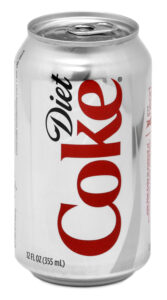Does the thought of writing your resume leave you confused?
Not sure who will be reading this? An AI (ATS) or a human?
It can feel stressful to know what to write, who to write for (recruiters? hiring managers?), what keywords, etc., especially when you aren’t sure exactly what an applicant tracking system does.
I’ll explain it in a nutshell.
ATS (Applicant Tracking Systems) are software programs used by employers to filter and sort through resumes to find the most qualified candidates for a specific job.
ATS typically look for the following elements in a resume:
Keywords: ATS scan resumes for specific keywords and phrases that match the job description. These can include job titles, technical skills, certifications, and other relevant terms that demonstrate your qualifications and experience. What words do you notice over and over in the job description?
Formatting: ATS prefer resumes that are well-organized and easy to read. To ensure your resume is ATS-friendly, use a simple and consistent formatting style, including headings, bullet points, and white space. Columns don’t work here as ATS reads left to right (like a book)—it doesn’t stop at the column.
Relevant Work Experience: ATS look for candidates with experience that closely matches the requirements of the job. Make sure your resume highlights your most relevant work experience, including job titles, dates of employment, and key achievements.
Education and Training: ATS also look for candidates with the required education and training for the job. Make sure to include your degree(s), certifications, and any relevant coursework or training programs you’ve completed.
Applicant Information: ATS also scans for basic applicant information such as name, contact information, and location. Make sure to include this information in a clear and consistent format at the top of your resume.
Knowing which keywords to add is perplexing to some of the candidates I talk to.
One way to know if your resume has enough keywords for ATS is to carefully review the job description and compare it to your resume. Look for the specific skills, qualifications, and experience that the employer is seeking and make sure to include relevant keywords and phrases throughout your resume.
Here are some tips to ensure your resume has enough keywords for ATS:
Use exact phrases: Use exact phrases from the job description wherever possible. If the job description calls for “project management experience,” include that exact phrase in your resume instead of a similar phrase such as “managed projects.”
Use variations of keywords: Use variations of keywords and phrases throughout your resume to demonstrate your familiarity with the industry and the specific job requirements. For example, if the job description calls for “customer service skills,” also include related terms such as “client service” or “customer support.”
Include relevant industry jargon: If there are specific technical terms or jargon commonly used in the industry, make sure to include them in your resume. This helps to demonstrate your familiarity with the industry and the specific job requirements.
Don’t stuff your resume with irrelevant keywords: While it’s important to include relevant keywords and phrases, don’t stuff your resume with irrelevant keywords. This can make your resume look unnatural and may actually hurt your chances of passing through an ATS.
Test your resume: Some ATS offer a “resume optimization” feature that can analyze your resume and provide feedback on whether it contains enough keywords for the job. Alternatively, you can test your resume by submitting it to a free online resume scanner that checks for ATS compatibility.
Something to keep in mind is that even though it’s important to write a resume that works with ATS, it’s also important to write for people.
It’s equally important to ensure that your resume is readable and appealing to human recruiters as well as ATS. This means using clear, concise language, storytelling, and formatting that makes your qualifications and experience easy to understand. Your resume should also highlight your unique skills and accomplishments in a way that captures the recruiter’s attention and stands out from other candidates. It should tell your story.
To strike a balance between ATS and human readability, consider tailoring your resume for each specific job application. Start by reviewing the job description and identifying the key skills and qualifications that the employer is seeking. Then, incorporate those relevant keywords and phrases throughout your resume while also crafting a compelling narrative that showcases your experience and achievements.
Similar to ATS, hiring managers typically look for the following key elements in a resume:
Relevant Experience: Hiring managers want to see that you have relevant work experience that demonstrates your ability to perform the job duties required for the position. Highlight your most relevant work experience and quantify your accomplishments with specific achievements and results.
Skills and Qualifications: Highlight your skills and qualifications that are directly relevant to the job. Be specific and provide examples of how you have used these skills in previous roles.
Education and Certifications: Include your educational background and any certifications that are relevant to the position. This helps to demonstrate your qualifications and expertise in a particular area.
Achievements and Accomplishments: Use specific examples to demonstrate your achievements and accomplishments in previous roles. Quantify your results wherever possible to demonstrate the impact you have made in previous positions. Numbers, numbers, numbers. Add metrics when possible.
Relevant Keywords: While not as critical as with ATS, it’s still important to use relevant keywords and phrases from the job description. This helps to demonstrate your familiarity with the industry and the specific requirements of the position.
Clarity and Readability: Hiring managers want to be able to quickly and easily scan your resume for the information they need. Use a clear and consistent formatting style, including headings and bullet points, to make your resume easy to read and understand. Keep the important info on page one—the top half of the page.
In summary, hiring managers look for a combination of relevant experience, skills and qualifications, education and certifications, achievements and accomplishments, relevant keywords, and clarity and readability in a resume. ATS seeks these things as well.
The job description offers a treasure trove of keywords and helps make the writing process so much easier. If you’ve done those same skills list them. Both the hiring manager and ATS will be seeking them out.




